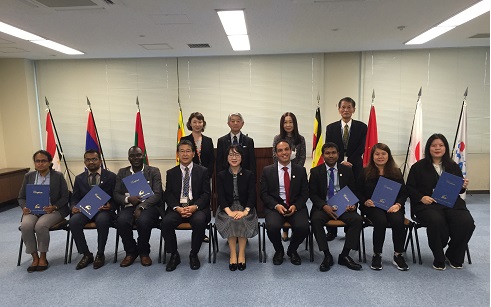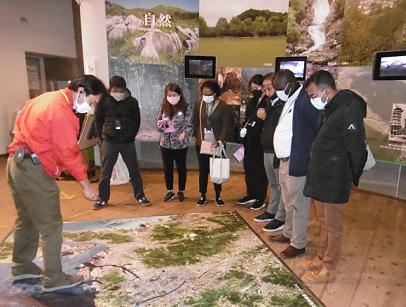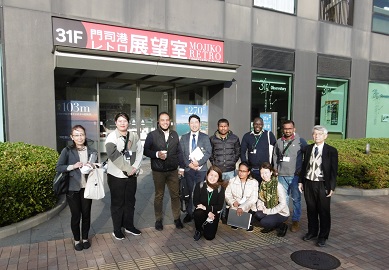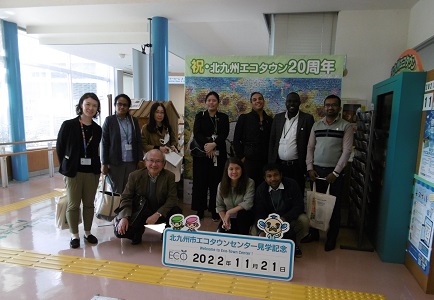Management for sustainable urban Development (A)
Looking back at our training course in Japan after a space of three years
Nov.11‚ 2022 to Nov.28‚ 2022
Makoto YAMANE‚ Course leader

Photo after closing ceremony

However‚ since the pandemic situation was still unstable during the period we were preparing the teaching resources‚ we created training materials in video form‚ with conventional commentary provided by an interpreter‚ so that they could also be used in online remote training. The participants who came to Japan for the training course praised those materials highly since they had been able to watch the videos in advance and gain a grasp of the lecture content.

The lecturers drew upon history and experience to explain how the city of Kitakyushu has worked in collaboration with citizens and private companies to create a plan for the city to enable its people to enjoy a better life‚ addressing issues that the participants themselves are currently struggling with (such as eradication of pollution‚ elimination of urban traffic congestion‚ improvement of river infrastructure‚ and improvement of urban living environment infrastructure).

- An introduction to the Japanese concept of smart cities
- An inspection tour of the Higashida integrated development
- Educational programs to encourage citizens to participate actively in communal activities
- An inspection tour of Eco-Town and its waste recycling
- An inspection tour of the urban redevelopment Murasakigawa My Town‚ My River Renovation Project
- An inspection tour of Mojiko Retro and its use of tourist attractions
- An inspection tour of the transportation and urban development project in Fukuoka city of Nishitetsu‚ a private company that is responsible for public transport
Perhaps encouraged by their first taste of life abroad in a long time‚ the participants meanwhile made active use of their days off and free time to explore on their own and to go on short trips to places such as Hiroshima. As a member of the training staff‚ I am delighted that Japan made such a good impression on the participants; for example‚ they enjoyed shopping and bought so many pairs of the latest shoes from fashion brands that I wondered if they were going to go into business when they returned home‚ and they told me how impressed they were by the gentle and kind demeanor of the Japanese people.
On the inspection tours in particular there were lively Q&A sessions when they saw actual facilities and operational conditions‚ so these tours seemed to be very valuable experiences‚ ones that are only possible for training courses in Japan. I expect the participants will find these experiences very helpful in putting the fruits of their training to practical use back in their home countries. However‚ some participants commented that it would be difficult to put in place the same kind of well-equipped infrastructure as Japan‚ or for people to acquire the hygienic‚ polite and well-disciplined behavioral patterns of the Japanese‚ given the still harsh economic‚ living and environmental conditions in their countries. One presentation outlined an action plan of starting with education for children and local residents‚ actively bringing private-sector vitality into the mix‚ and carrying out steady improvements. I strongly expect them to play an active role in their countries going forward.



